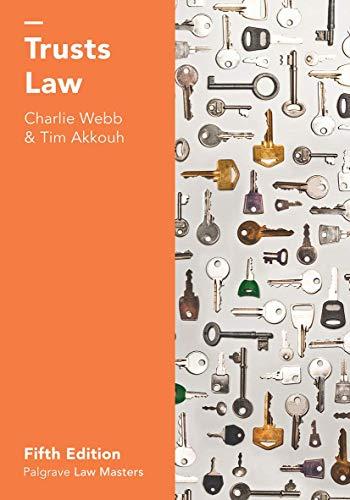Question
When does an attempt exist? How close to the actual crime do you have to be? Is attempt useless if it only applies at the
- When does an attempt exist? How close to the actual crime do you have to be?
- Is attempt useless if it only applies at the last second before the crime actually happens?
1.An attempt exists when a criminal has the thought of committing the crime. You have to go through with the crime and fail at the crime itself before it is committed. No, an attempt is useless if it only applies before the last second before a crime is committed because you can be tried under the intention of conspiracy to commit a crime. We punish attempts to deter further attempts. This is justified by deterrence theory. To classify an attempt you need evidence of a specific attempt. According to the Penal Law code 110, an attempt even legal can become criminal if it becomes a criminal action.
2. A person is guilty of an attempt to commit a crime when, with intent to commit a crime, he engages in conduct which tends to the effect the commission of such crime" (N.Y. PL 110.00). The sentence for an attempt is 1 classification below the completed crime. An attempt to commit a crime can be criminal and should be punished. If someone attempts to commit a murder but fails, that does not free them of charges. An attempt conviction requires a specific intent. Once the individual has crossed the threshold of criminality, or even if they completely abandon the plan, they may be arrested for the crime intended. On page 656 it states, "many courts insist the threshold of criminality be placed very close to the last act".
I don't think attempt is useless if it only applies at the last second before the crime happens. I think charging someone with attempt sets an example, regardless of if you complete the crime intended, the actions engaged in can be punished. I do however believe it can vary case by case and depends on certain factors such as intent, how far into the crime, and the reasons they did not go through with the crime.
3. An attempt exists when an individual engages in conduct with the intention to commit a specific crime and takes a substantial step toward its commission. The proximity to the actual crime can vary depending on the jurisdiction and the specific circumstances of the case as seen in the textbook. One example in particular is seen in the case Smallwood v. State; Smallwood's actions of engaging in unprotected sex while knowing he was HIV positive was considered attempted murder, considering his knowledge of the risks of contracting HIV. The prosecution argued his HIV status could be equated to a deadly weapon and, therefore, his actions similarly endangered the lives of his victims. Interpretations such as these help answer the question of how close to the actual crime one has to get. The example highlights knowledge and intention being present in order for an attempt to exist regardless of how close one gets to "successfulness" in carrying out the crime.
The concern about the level of preparation is important in determining full comprehension of one's intentions in an attempt to carry out a crime. An attempt is not useless if it only applies at the last second before the crime actually happens. The concern about the level of preparation and possibility is important in determining dull comprehension of one's intentions in an attempt to carry out a crime. While proximity to the actual crime plays a significant role in assessing an attempt, the law also considers the individual's intention. Therefore, even if an attempt occurs at the last second, it can still be deemed significant if there is clear or sufficient evidence of intent and a substantial step towards completing the crime.
4. The justification for punishing attempts to commit a crime stems from the idea that society aims to prevent harm and protect its members. Various theories of punishment provide different perspectives on why attempts are punished. One prominent theory is the consequentialist approach, which focuses on the prevention of harm. By punishing attempts, the legal system aims to deter individuals from engaging in criminal behavior, thereby reducing the overall harm inflicted on society.
Another theory is the retributive approach, which argues that punishment is deserved for the moral wrongdoing inherent in attempting a crime. Punishing attempts serves as a form of retribution for the individual's intent to violate the law, regardless of the actual harm caused.
The reason attempts are not punished in identical fashion to the completed crime is often based on the principle of proportionality. The severity of punishment typically corresponds to the level of harm caused. Punishing attempts acknowledges the culpability of individuals for their intent but recognizes that the harm caused by an attempt may be less than that of a completed crime.
i have answered these two questions 4 different ways. Please just respond back on your feedback on each answer. please refrain from saying your answer ..... etc.etc
Step by Step Solution
There are 3 Steps involved in it
Step: 1

Get Instant Access to Expert-Tailored Solutions
See step-by-step solutions with expert insights and AI powered tools for academic success
Step: 2

Step: 3

Ace Your Homework with AI
Get the answers you need in no time with our AI-driven, step-by-step assistance
Get Started


